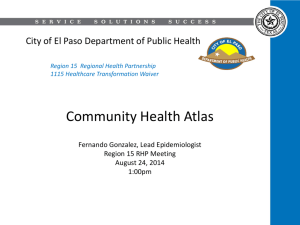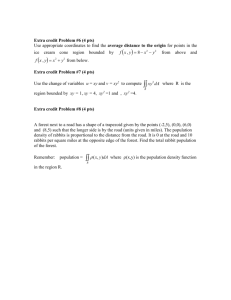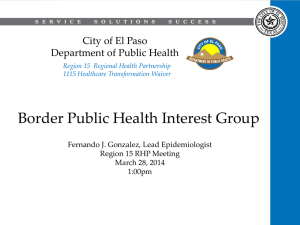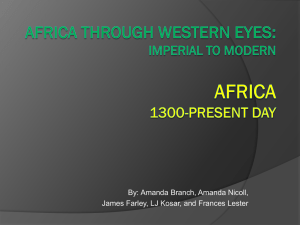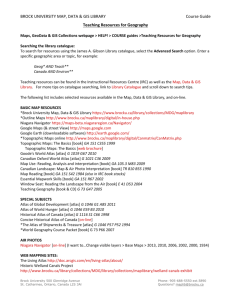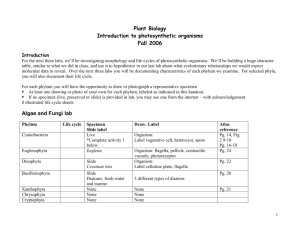course number: 106:01 credit hours: 3
advertisement
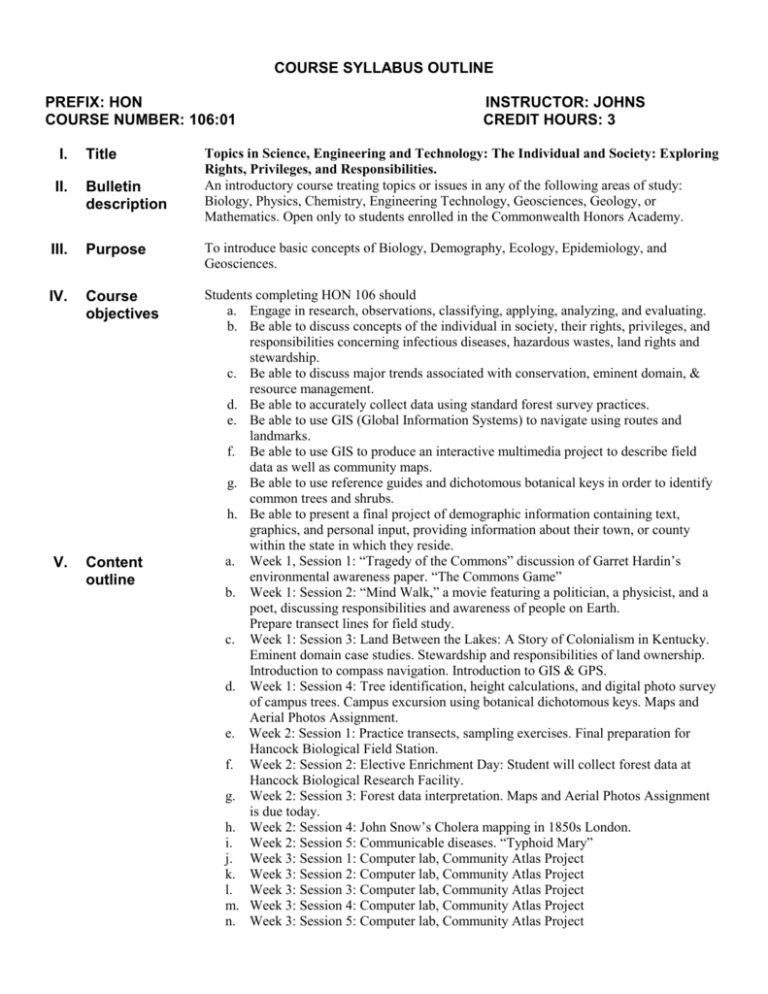
COURSE SYLLABUS OUTLINE PREFIX: HON COURSE NUMBER: 106:01 INSTRUCTOR: JOHNS CREDIT HOURS: 3 Topics in Science, Engineering and Technology: The Individual and Society: Exploring Rights, Privileges, and Responsibilities. An introductory course treating topics or issues in any of the following areas of study: Biology, Physics, Chemistry, Engineering Technology, Geosciences, Geology, or Mathematics. Open only to students enrolled in the Commonwealth Honors Academy. I. Title II. Bulletin description III. Purpose To introduce basic concepts of Biology, Demography, Ecology, Epidemiology, and Geosciences. IV. Course objectives V. Content outline Students completing HON 106 should a. Engage in research, observations, classifying, applying, analyzing, and evaluating. b. Be able to discuss concepts of the individual in society, their rights, privileges, and responsibilities concerning infectious diseases, hazardous wastes, land rights and stewardship. c. Be able to discuss major trends associated with conservation, eminent domain, & resource management. d. Be able to accurately collect data using standard forest survey practices. e. Be able to use GIS (Global Information Systems) to navigate using routes and landmarks. f. Be able to use GIS to produce an interactive multimedia project to describe field data as well as community maps. g. Be able to use reference guides and dichotomous botanical keys in order to identify common trees and shrubs. h. Be able to present a final project of demographic information containing text, graphics, and personal input, providing information about their town, or county within the state in which they reside. a. Week 1, Session 1: “Tragedy of the Commons” discussion of Garret Hardin’s environmental awareness paper. “The Commons Game” b. Week 1: Session 2: “Mind Walk,” a movie featuring a politician, a physicist, and a poet, discussing responsibilities and awareness of people on Earth. Prepare transect lines for field study. c. Week 1: Session 3: Land Between the Lakes: A Story of Colonialism in Kentucky. Eminent domain case studies. Stewardship and responsibilities of land ownership. Introduction to compass navigation. Introduction to GIS & GPS. d. Week 1: Session 4: Tree identification, height calculations, and digital photo survey of campus trees. Campus excursion using botanical dichotomous keys. Maps and Aerial Photos Assignment. e. Week 2: Session 1: Practice transects, sampling exercises. Final preparation for Hancock Biological Field Station. f. Week 2: Session 2: Elective Enrichment Day: Student will collect forest data at Hancock Biological Research Facility. g. Week 2: Session 3: Forest data interpretation. Maps and Aerial Photos Assignment is due today. h. Week 2: Session 4: John Snow’s Cholera mapping in 1850s London. i. Week 2: Session 5: Communicable diseases. “Typhoid Mary” j. Week 3: Session 1: Computer lab, Community Atlas Project k. Week 3: Session 2: Computer lab, Community Atlas Project l. Week 3: Session 3: Computer lab, Community Atlas Project m. Week 3: Session 4: Computer lab, Community Atlas Project n. Week 3: Session 5: Computer lab, Community Atlas Project VI. Instructional activities VII. Field and clinical experiences VIII. Resources IX. Grading procedures Tours of campus flora Software tutorials Videos: “Mind Walk”, and ”Typhoid Mary” Discussion of readings, presentations of data During the first week and part of the second week of the course students will be preparing and training with field equipment necessary to collect quantitative and qualitative data. We will learn compass orientation, identify invasive plant species, and gather height and species data from trees. On Tuesday, June 17, 2008 transportation will be provided to Hancock Biological Research Facility, Murray State’s premier biological field station near Kentucky Lake where students will prepare transect lines and collect data on trees that live within a ten-acre plot of forest located at the site. Students will be served lunch at the station as well as given a tour of the facility. Access to the Murray State Library and Online resources will be provided during scheduled periods. The Mid-America Remote sensing Center (MARC) will be available for students completing GIS projects. Students may wish to bring their own flash memory drives to store and transport digital information. Grades will be based on students’ writing assignments, examination, and participation in course. A=90-100, B=80-89, C=70-79, D=60-69, E=less than 60 Community Atlas Project......................................................................................... 400 pts Maps and Aerial Photos ........................................................................................... 300 pts Field work ................................................................................................................ 200 pts Case Studies on Eminent Domain............................................................................ 100 pts Total ......................................................................................................................... 1000 pts X. XI. XII. Attendance policy Attendance at all classes is mandatory. If you are unable to attend class for medical reasons, you must immediately contact a member of the Leadership Team. “Cheating, plagiarism (submitting another person's material as one's own) or doing work for Academic honesty policy another person which will receive academic credit are all impermissible. This includes the Text and references use of unauthorized books, notebooks, or other sources in order to secure or give help during an examination, the unauthorized copying of examinations, assignments, reports, or term papers, or the presentation of unacknowledged material as if it were the student's own work. Disciplinary action may be taken beyond the academic discipline administered by the faculty member who teaching the course in which cheating took place.” (see current MSU Undergraduate Bulletin) Breslin, P., Frunzi, N., Napoleon, E., & Ormsby, T. 2004. Getting to Know ArcGIS Desktop. Basics of ArcView, ArcEditor, and ArcInfo. ESRI Press. Feaster, L., Malone, L., Napoleon, E., Plamer, A.M., Voigt, C.L. 2002. Mapping Our World: GIS Lessons for Educators. 1968. Hardin, G. The Tragedy of the Commons. Science. Vol. 162. 1243-1248. XIII. Prerequisites XIV. Statement of Affirmative Action and Equal Opportunity 1990. Hazardous Wastes from Homes. Enterprise for Education, Inc. Admission to the Commonwealth Honors Academy. Murray State University does not discriminate on the basis of race, color, national origin, sex, religion, marital status, age, or disability in employment, admission, or the provision of services, educational programs and activities, and provides, upon request, reasonable accommodation including auxiliary aids and services necessary to afford individuals with disabilities an equal opportunity to participate in all programs and activities. For information regarding nondiscrimination policies contact the Office of Equal Opportunity, 270-809-3155.
